Awesomeness Round-Up – 9/7/2011
- By Maggie Masetti
- September 7, 2011
- 1 Comment
We’ve had to say goodbye once again to our intern Faith – we will miss her and we hope you enjoyed her posts this summer!
Before NASA interns leave for the summer, they often present their work. Here’s what July’s poster session looked like:

Credit: NASA Goddard/Bill Hrybyk
Did you know that not all stars are hot? There is a class of them that are as cool as the human body in temperature! They are a type of brown dwarf, called “Y dwarfs” – and astronomers have been hunting for confirmation of their existence for a decade. They are so cool and faint that with a visible-light telescope, they are impossible to see. Using the infrared WISE telescope, their faint glows were finally observed. Six Y dwarfs, located relatively close to the sun (withing 40 light years) were spotted -the picture below shows the coldest brown dwarf known so far (green dot in very center of this infrared image). you can read more at the NASA news release.
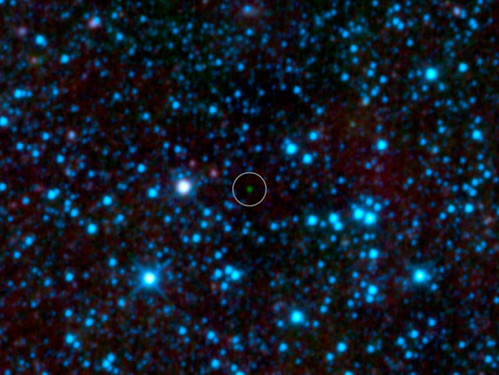
Image credit: NASA/JPL-Caltech/UCLA
And here’s an artist’s conception of what one of these stars might look like:

Image credit: NASA/JPL-Caltech
There were two recently published articles about a cosmic phenomena. Since March, X-rays have been streaming towards Earth from a source in the constellation Draco. David Burrows, professor of astronomy at Penn State University and lead scientist for the mission’s X-Ray Telescope instrument said, “It behaves unlike anything we’ve seen before.”
Astronomers learned that the source, called Swift J1644+57, is result a distant galaxy’s dormant black hole waking up and then shredding and consuming a star. The galaxy is so far away, it took the light from the event approximately 3.9 billion years to reach Earth.
When first detected March 28, the flares were though to signal a gamma-ray burst, one of the nearly daily short blasts of high-energy radiation often associated with the death of a massive star and the birth of a black hole in the distant universe. But as the emission continued to brighten and flare, astronomers realized that the most plausible explanation was the tidal disruption of a sun-like star seen as beamed emission.
Images from Swift’s Ultraviolet/Optical (white, purple) and X-Ray telescopes (yellow and red) were combined to make this view of Swift J1644+57. Evidence of the flares is seen only in the X-ray image, which is a 3.4-hour exposure taken on March 28, 2011.
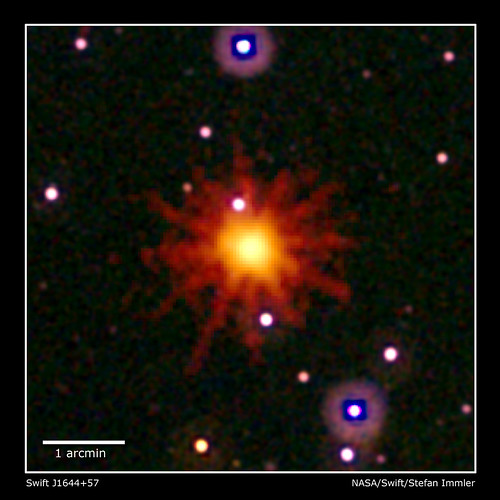
Credit: NASA/Swift/Stefan Immler
Here’s a video of what this phenomena might look like:
Read more at the NASA release.
Photographer Alex Cherney captured these spectacular photos of the Milky Way taken from the southern tip of Australia. Stunning!
Another cool visual, is this interactive 3D model of the solar system. Give it a whirl!
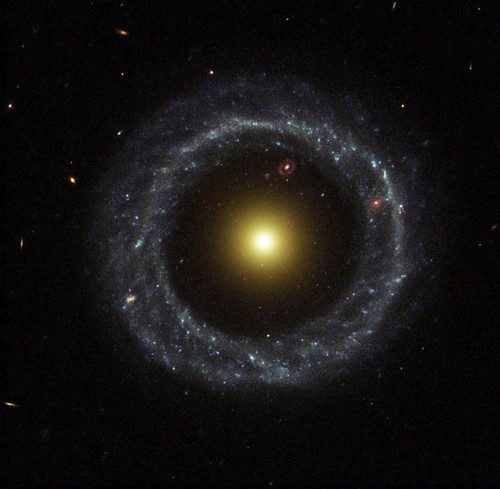
Credit: NASA, Hubble Heritage Team/STScI/AURA
The above oddball galaxy is known as “Hoag’s Object” and was discovered by Arthur Hoag in 1950. Made up of a golden sphere of stars in the middle of a much bigger ring of stars, this galaxy was thought to have have been formed as the result of a collision. More recently astronomers have theorized that this object may have spun itself into this strange shape.
Using both ground- and space-based observations, Israeli and Russian astronomers have proposed that the golden core formed first, at least 10 billion years ago. Soon after, the core skirted itself with a disk of hydrogen gas that it pulled from surrounding material. The disk’s spiral pattern could be caused by rotation of the core, if the central cluster isn’t quite spherical. This would also explain the ongoing star formation that dots the ring with young, massive stars.
More information at Science News.
Astronomers using NASA’s Chandra X-ray Observatory discovered the first pair of supermassive black holes in a spiral galaxy similar to the Milky Way. Approximately 160 million light years from Earth, the pair is the nearest known such phenomenon.
The black holes are located near the center of the spiral galaxy NGC 3393. Separated by only 490 light years, the black holes are likely the remnant of a merger of two galaxies of unequal mass a billion or more years ago. Here’s the NASA feature article on this phenomena.
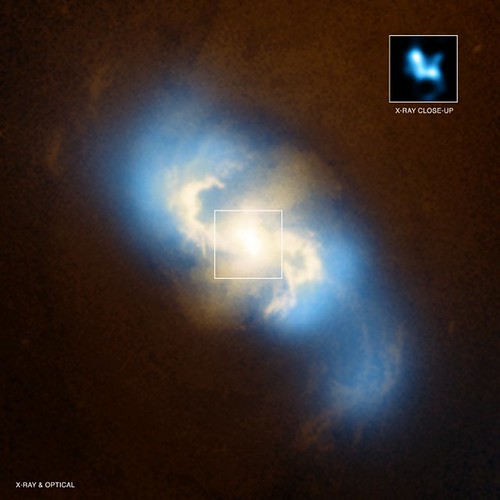
Credit: X-ray: NASA/CXC/SAO/G. Fabbiano et al; Optical: NASA/STScI
In James Webb Space Telescope news, there are new images out of the full-scale mock-up of the backplane – the support structure that will hold the mirrors. It’s being tested with a full-scale test sunshield at Northrop Grumman! The mock-up weights over 5600 lbs and was lifted very carefully and precisely by a crane.

Credit: Nortrop Grumman
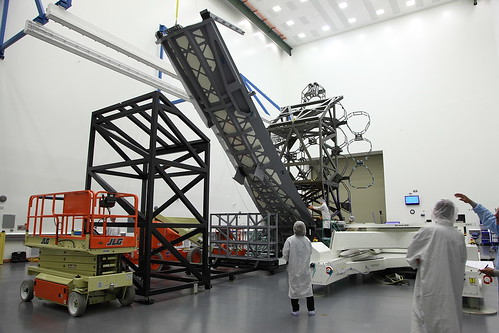
Credit: Nortrop Grumman



I always like the inventions of NASA so much ,,there is no words to implement it..NASA is my Dream Place..Its my iternal desire to join the research works of NASA..I am Indian but It d’nt matter ……….